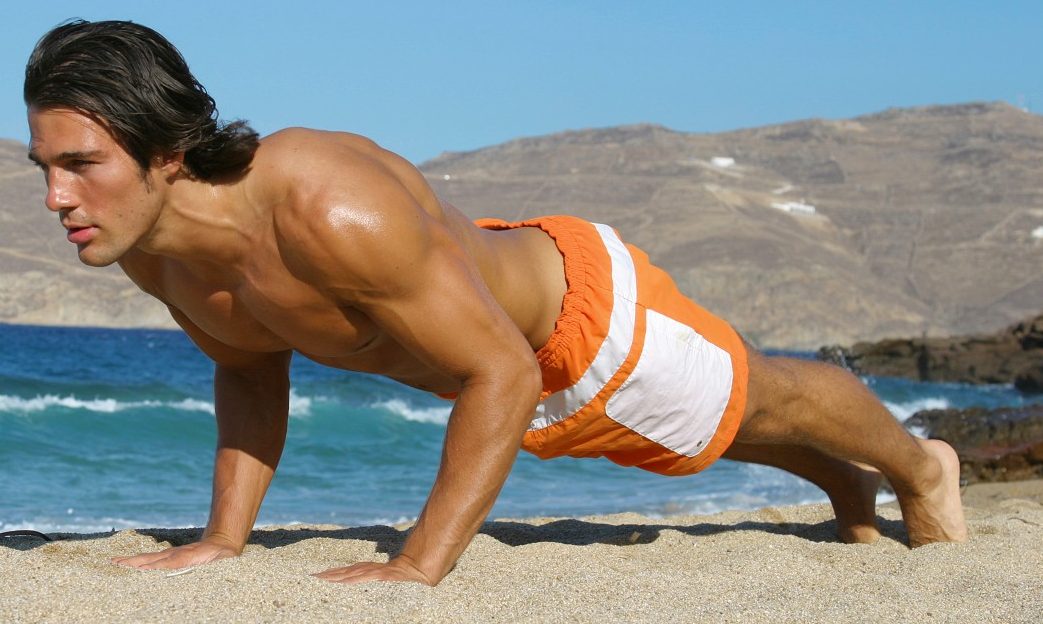Sand Workouts — Does the Surface You Exercise On Make a Difference?

Walking on a beach requires a bit more effort than walking on pavement or grass, especially if the sand is soft. Do surfaces affect your exercise results?
Warmer temperatures during summer inspire many people to look for ways to exercise outside. If you have a beach or another sandy surface nearby, you might consider using it for your next workout.
YOU MIGHT ALSO LIKE: What Is Functional Fitness?
Why sand helps exercise
Anyone who’s ever walked on a beach knows it requires a bit more effort than walking on pavement or grass, especially if the sand is soft. That added effort means walking and running in the sand results in burning more calories than doing the same activity on a more traditional surface.
Exercising on sand may work the large muscles around your hips, knees, and ankles harder, all of which stabilize your joints on any unstable surface. Soft sand also absorbs energy so you don’t get the “rebound” effect of running or exercising on a hard surface. Your muscles are engaged longer and harder to push out of sand as opposed to bouncing off pavement or grass.
If you’re not a runner, you can still take advantage of the destabilizing effects of sand to ramp up the intensity of your workout. For instance, you can play soccer on sand. Soccer is a high-intensity activity in which you run, sprint, turn, and jump, placing significant demands on your neuromuscular system.
Techniques to improve lower-limb performance and whole-body coordination during play could provide a significant advantage. One technique, plyometrics, also called plyos or jump training, uses explosive movements that improve power and control, a good approach for improving athletic performance. But it comes at a cost — namely muscle soreness and temporarily diminished physical capacity. In one study, people who did plyometric exercises on either sand or grass showed similar improvements, but the sand group had less muscle soreness.
If you struggle with sore or arthritic joints in your hips, legs, or feet, you may be able to perform a workout more comfortably in sand. If you’re recovering from an injury, the low-impact nature of walking or working out in sand might also help you benefit with less risk of re-injury.
Workout inspiration
If you’re a runner, consider occasionally taking your workout to the beach for variety. Alternate 10- to 20-second intervals of all-out sprints with two to three minutes of medium-effort running, or some similar combination.
YOU MIGHT ALSO LIKE: Exercising in Bursts
If your beach has hills or dunes, consider sprinting up a dune and jogging back down and around the dune until you catch your breath. Then do it again several times to complete your workout.
If you’re not a runner, you can still do many body-weight exercises in the sand, such as squats, lunges, reverse lunges, and planks. Try interspersing those moves with long jumps, hops, tuck jumps, side shuffles, donkey kicks, and mountain climbers to incorporate plyometric moves into your routine.
Other considerations
If you’re thinking about giving a sand workout a try, first check out the surface. Not everyone has access to a soft beach, but that doesn’t mean you can’t go to a lake shore or a playground with a sandy bottom. The quality of the sand, however, may determine whether you wear shoes.
If you can go without shoes, you may realize some additional benefits or experience added strain on your feet, depending on your physical make up. Running barefoot gives you a fuller range of motion in your feet and ankles, but you may need to strengthen them first. Start slowly, completing a portion of your run or workout in bare feet until your body adjusts to the new surface. If you have especially weak ankles or arches, approach barefoot workouts with caution to avoid injuries.
Finally, check out whether there are any gyms in your area that offer sand workouts.
YOU MIGHT ALSO LIKE: The Benefits of High Intensity Interval Training (HIIT)
Updated:
November 22, 2023
Reviewed By:
Janet O’Dell, RN